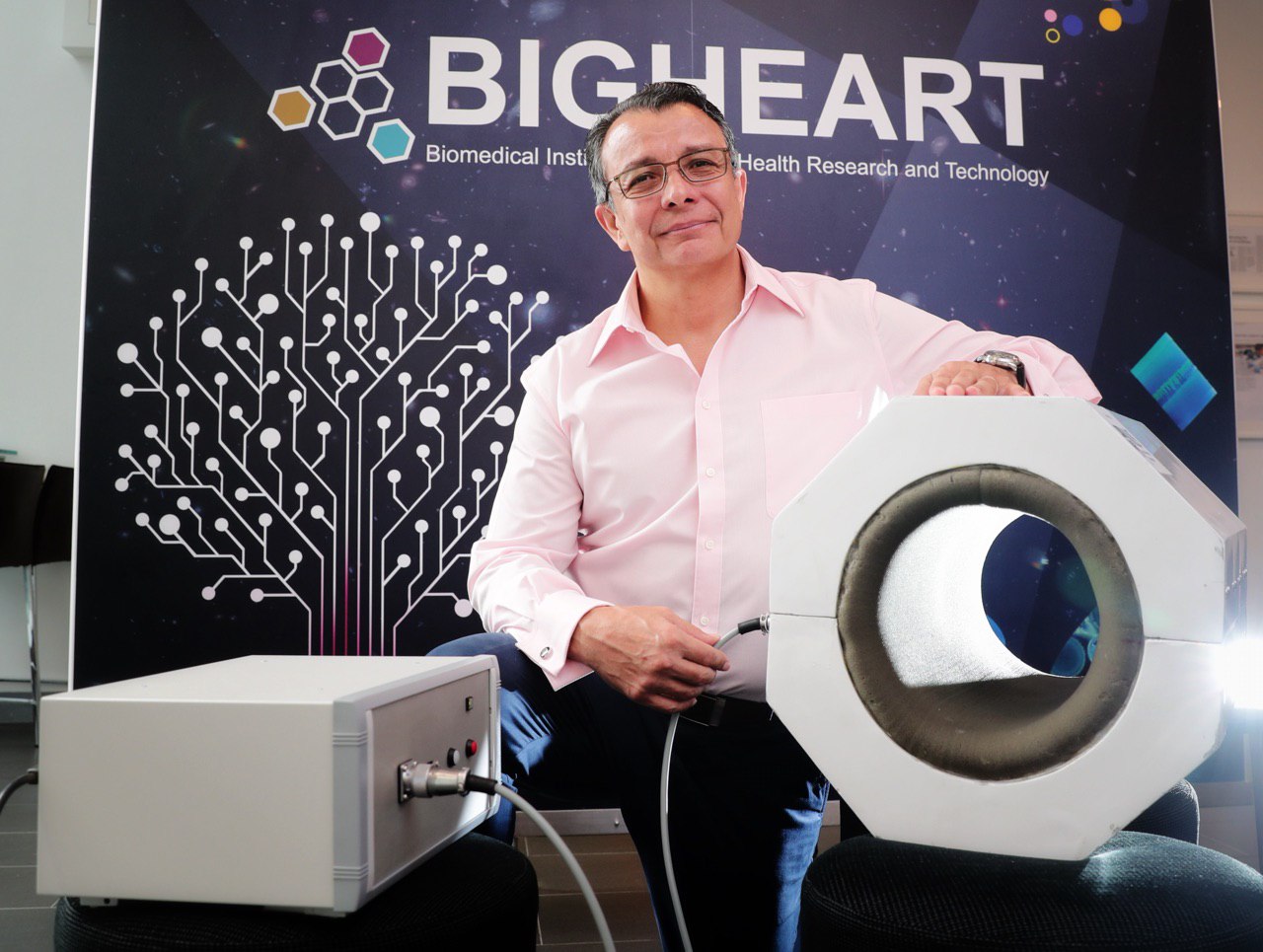NUS researchers create magnetic device to aid muscle recovery
Sign up now: Get ST's newsletters delivered to your inbox

Associate Professor Alfredo Franco-Obregon with the device MRegen, which targets the muscles in a user's leg with a specific magnetic signature and creates metabolic activity in the cells similar to when a person exercises.
ST PHOTO: KELVIN CHNG
Follow topic:
SINGAPORE - A team of researchers at the National University of Singapore (NUS) has created a device that uses magnetic fields to simulate the biological effects of exercise and promote muscle recovery.
The device, called MRegen, targets the muscles in a user's leg with a specific magnetic signature and creates metabolic activity in the cells similar to when a person exercises.
The team of 12 researchers was led by Associate Professor Alfredo Franco-Obregon from the Biomedical Institute for Global Health Research and Technology at NUS and the Yong Loo Lin School of Medicine's department of surgery.
The device, called MRegen, targets the muscles in a user's leg with a specific magnetic signature and creates metabolic activity in the cells similar to when a person exercises.
The team of 12 researchers was led by Associate Professor Alfredo Franco-Obregon from the Biomedical Institute for Global Health Research and Technology at NUS and the Yong Loo Lin School of Medicine's department of surgery.
Between 2015 and 2017, the team conducted two clinical trials.
The first involved 10 healthy volunteers who received 10 minutes of the magnetic field treatment in one leg once a week for five weeks. By the end of the trial, they showed a 30 per cent to 40 per cent improvement in muscle strength in both legs, Prof Franco-Obregon said.
The second trial involved 20 patients who had undergone anterior cruciate ligament knee surgery. Half of the patients were treated with MRegen for 10 minutes a week in addition to their normal rehabilitation therapy for four months following the surgery.
Prof Franco-Obregon said: "The results were very positive. In the individuals who received the magnetic field treatment, bone mineral density went up. Signs of muscle degeneration went down, while signs of muscle growth went up."
He added that those who used MRegen regained their normal muscle size and strength about a month earlier on average than those who had undergone only normal rehabilitation therapy.
Magnetic resonance imaging (MRI) scans also showed that their muscle metabolism, an indicator of muscle health and regenerative capacity, had improved by up to 50 per cent.
The prototype of the MRegen machine resembles a miniature MRI scanner large enough for a person to insert one leg. The user does not feel anything while it is in operation.
The treatment should be used in conjunction with physical exercise instead of replacing it, but it can be helpful in a clinical setting and for elderly people or patients who have undergone surgery, said Prof Franco-Obregon.
"Even though exercise is still extremely important, it comes at a cost because of the mechanical stress it places on the cells. Energy has to go to repairing the muscle before it can benefit. This treatment produces no mechanical stress."
The team has filed a patent for its invention and created a company called QuantumTX to take the device to the market.
Prof Franco-Obregon said the team will conduct trials with elderly volunteers this year and is aiming to develop a commercial version of the device for use in eldercare facilities by 2020. It will cost about $10,000 to $30,000 and a user can expect to pay between $10 and $20 per 10-minute session.
He added that future trials will explore the technology's application in obesity management and disease treatment.

